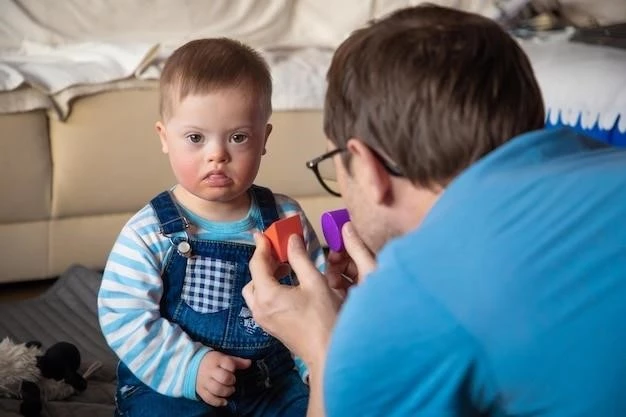Overview of Microcephaly Cleft Palate Autosomal Dominant Disorder
Say et al․ (1975) described a new, presumably autosomal dominant disorder characterized by cleft palate, short stature, microcephaly, large ears, and hand anomalies․
Evidence of Autosomal Dominant Inheritance
Say et al․ (1975) introduced a new disorder characterized by cleft palate, short stature, microcephaly, large ears, and hand anomalies․ An affected grandfather, daughters, and grandson point towards an autosomal dominant pattern․
Clinical Characteristics and Symptoms
Individuals with this disorder typically present with a combination of cleft palate, short stature, microcephaly, large ears, hand anomalies, and intellectual disabilities․ Features may vary in severity, with some affected individuals showing additional craniofacial malformations and hearing loss․ Additionally, a subset of patients may exhibit mild to severe cognitive impairments along with congenital anomalies affecting the external ear․
Mandibulofacial Dysostosis with Microcephaly (MFDM)
Mandibulofacial dysostosis with microcephaly (MFDM) is characterized by malar and mandibular hypoplasia, microcephaly (congenital or postnatal onset), intellectual disability (mild, moderate, or severe), malformations of the external ear, and hearing loss that is typically conductive․
Characteristics of MFDM Syndrome
Mandibulofacial dysostosis with microcephaly syndrome presents with features such as malar and mandibular hypoplasia, microcephaly, intellectual disabilities of varying severity, malformations of the external ear, and conductive hearing loss․ Craniofacial malformations like cleft palate and choanal atresia may also be observed․
Association with Cleft Palate and Microcephaly
Clinical reports have highlighted the association of microcephaly cleft palate autosomal dominant disorder with distinct features such as mental retardation, craniofacial anomalies including cleft lip and anterior cleft palate, hypotelorism, skeletal anomalies, and chronic constipation․ These features collectively contribute to understanding the genetic patterns involved in the disorder․

Genetic Basis of Microcephaly Cleft Palate Autosomal Dominant Syndrome
The disorder is linked to an autosomal dominant pattern, requiring one copy of the altered gene․ Genes and environmental factors contribute to the condition’s etiology․
Link to Specific Genetic Mutations
The disorder’s autosomal dominant nature involves specific genetic mutations․ The interplay of genes and environmental factors contributes to the development of this syndrome․
Differentiation from Other Syndromes
The distinct clinical features of the microcephaly cleft palate autosomal dominant disorder help differentiate it from other syndromes with similar presentations․ Unique characteristics, such as intellectual disabilities, craniofacial anomalies, and skeletal issues, set this syndrome apart from related conditions․

Clinical Presentation and Diagnosis
Distinct features like cleft palate, short stature, microcephaly, large ears, hand anomalies characterize the disorder․
Identification of Orofacial Clefts and Craniofacial Anomalies
Individuals with orofacial clefts and craniofacial anomalies characteristic of this disorder usually present with conditions like cleft palate, short stature, microcephaly, large ears, and hand anomalies․ These distinctive features aid in the clinical diagnosis and management of the syndrome․
Role of Genetic Counseling in Microcephaly Cases
Genetic counseling plays a crucial role in cases of microcephaly to assess the risk of transmitting the autosomal dominant disorder to offspring and provide support and guidance to affected individuals and their families․
Treatment and Management Approaches
Medical interventions address unique needs such as microcephaly, cleft palate, and associated anomalies․
Medical Interventions for Microcephaly and Cleft Palate
Treatment for microcephaly and cleft palate in individuals with this disorder typically involves a multidisciplinary approach, including surgical interventions to repair the cleft palate and therapies to support developmental and functional outcomes associated with microcephaly․
Importance of Multidisciplinary Care Teams
Multidisciplinary care teams play a crucial role in providing comprehensive and coordinated care to individuals with the microcephaly cleft palate autosomal dominant disorder․ These teams typically include healthcare professionals from various specialties such as genetics, pediatrics, otolaryngology, speech therapy, and developmental psychology to address the complex needs associated with the condition․
A variety of genetic disorders, such as microcephaly cleft palate autosomal dominant, can have significant implications․ Current research aims to explore prevalence rates and underlying genetic mechanisms․
Prevalence and Research Insights
Current studies aim to explore the incidence and genetic mechanisms underlying the microcephaly cleft palate autosomal dominant disorder․
Current Studies on the Pathophysiology of the Disorder
Studies are ongoing to unravel the pathophysiology of the microcephaly cleft palate autosomal dominant disorder, shedding light on the genetic and environmental factors contributing to its development․
Impact on Patients and Families
Patients and families affected by this disorder face potential challenges due to the various clinical manifestations․ Supportive resources can help navigate the complexities of the syndrome․
Potential Challenges Faced by Individuals with the Syndrome
Individuals with the microcephaly cleft palate autosomal dominant disorder may experience challenges related to developmental delays, intellectual disabilities, craniofacial anomalies, and other associated health issues, impacting their quality of life and requiring specialized care and support․
Supportive Resources Available for Affected Families
Families with individuals diagnosed with the microcephaly cleft palate autosomal dominant disorder can access supportive resources designed to provide assistance, guidance, and emotional support․ These resources aim to aid families in navigating the challenges associated with the syndrome and connecting them with relevant services and information to improve the overall well-being of affected individuals and their loved ones․
